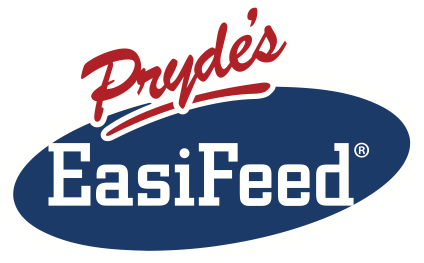Thank you for letting us know!
So many questions come through to Pryde's EasiFeed asking how people can improve their current situation when owning a horse through nutrition. Ailments like: laminitis, cushings, tying up, gastric ulcers, weight gain/topline, hyperactivity and so many more can be heavily influenced by what you do right, nutritionally. By letting us know that you work with horses as a profession, over time we will tailor information that is sent through to you to help out the best way possible.
Thank you again for joining our Newsletter and if you haven't already liked our Facebook Page, feel free to click the link below.
Here is a bundle of information to help you get started...
✔ High fibre and naturally cool with no grain or molasses
✔ Can be added to any diet, it is the perfect replacement for grain
✔ Low sugar and starch level, suitable for laminitic and tying up horses
✔ High fibre, naturally cool horse feed with no grain or molasses
✔ Omega oils and quality protein for coat shine and muscle
✔ Low sugar and starch level, suitable for laminitic and tying up horses
Find a Stockist
Store Locator is loading from Storemapper plugin...
Pryde's nutritional videos
Gastric Ulcers in horses are simply open wounds in the stomach. Ulcers are very common in horses in work with more than 70% of racehorses and more than 90% of endurance horses found to be affected in carious studies. Leisure and show horses and even horses simply 'at pasture' can also be affected.
Treatment of gastric ulcers in horses is so important. If a horse has gastric ulcers, they must be medically treated. Two drugs of choice, omeprazole and ranitidine. These drugs reduce/stop gastric acid production and create an environment in the stomach where healing can take place. Omeprazole appears to be the most effective.
Ultimately, prevention of gastric ulcers in horses is key. Never EVER work a horse on an empty stomach. This will make sure a physical barrier is always present in the stomach to stop acid splashing up on the upper part of the stomach.
There are many things that can 'trigger' laminitis in horses, but there are two main feed related ones. First would be the fermentation of large amounts of starch and 'sugars' (non-structural carbohydrates, NSC) in the hindgut. NSC Fermentation - Hindgut Acidosis - Death of Bacteria and Leaking of Gut Wall - Changes in the hoof including dsyregulation of MMP enzymes - Laminitis.
Managing horses nutritionally with laminitis can be quite tricky. Here are some points to remember when doing so. 00:12 Always base the diet on forages (pastures or hay). 00:16 Feed forages with less than 12% non-structural carbohydrates (NSC).
Managing horses nutrition through changing seasons is a concept that is important for all horses! What is the trick? It's being able to change how much you are feeding to control body fatness and behaviour as pasture quality changes WITHOUT causing mineral deficiencies in the diet.




